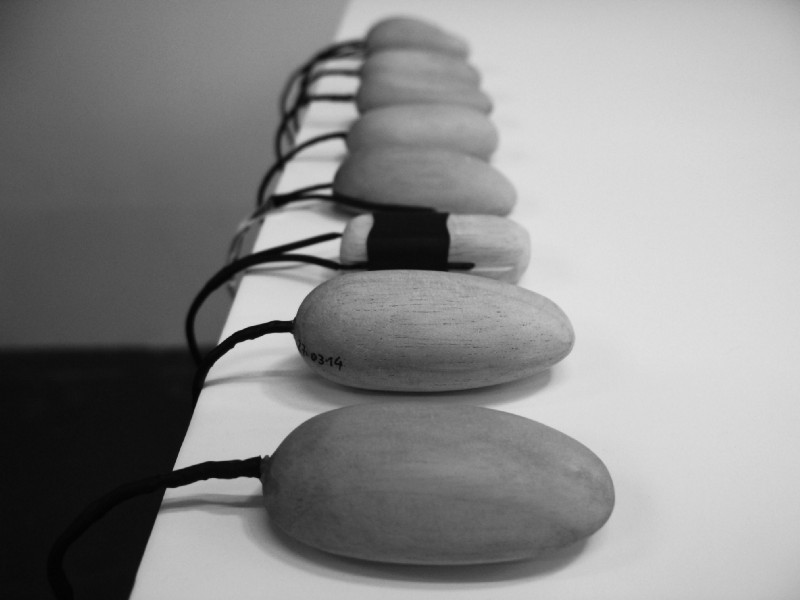
Internet of Things then, now & soon — 100 years overview

Let’s just put it straight: The word of technology is never short of hype. Some years ago, the tech-world got flushed with excitement about the Cloud, just to turn eyes on Big Data a year ago. So today, when Internet of Things peaks in popularity, let’s take a moment to dig into the issue:
Is Internet of Things just a short-term hype, that will soon fade?
Or is it an idea absorbing people’s minds much longer than we think?
To answer that, let’s jump a few decades back.

Great Scott! We’re back in 30’s!
Source
The short history of Internet of Things
“Within our grasp is the leisure of the Greek citizen, made possible by our mechanical slaves, which far outnumber his twelve to fifteen per free man… As we step into a room, at the touch of a button a dozen light our way. Another slave sits twenty-four hours a day at our thermostat, regulating the heat of our home. Another sits night and day at our automatic refrigerator. They start our car, run our motors, shine our shoes, and cult our hair. They practically eliminate time and space by their very fleetness.”
Jay B. Nash, ”Spectatoritis.”
Sounds like a slightly skeptical description of Intelligent Home System? Nothing like that.
Actually, ”Spectatoritis” was published in 1932. Obviously, that time Nash’s predictions couldn’t involve the Internet, not to mention Internet of Things devices. And YES, Nash openly criticised what he called “commercial entertainment consumption.” But the very vision of smart objects assisting people in their daily routines started seeding in people’s minds years before ARPANET launch. And — paradoxically — it was partly thanks to Nash.
It didn’t take long to see the results. In 1955 Edward O. Thorp comes up with an idea of the first wearable computer (yep, you read it well). His analog pocket device used for predicting roulette wheels was developed together with Claude Shannon, and tested in Las Vegas in 1961.
But wearables trend didn’t stop with facilitating gambling games. In fact, after just a few years, wearables got used i.a for the sake of the physically challenged. It was 1967, when Hubert Upton invented his analog wearable, helping the Deaf in lip reading. Ten years later, when CC Collins developed his head-mounted camera converting images into a 10-inch tactile grid on a vest, wearables made a way also for the visually-impaired.
Although conceived for the Deaf, Upton’s invention also served for the military purpose.
Time progressed, so did the development of the global network. In Autumn 1991 Xerox PARC’s Mark Weiser described his vision of how
“specialized elements of hardware and software, connected by wires, radio waves and infrared, will be so ubiquitous that no one will notice their presence.”
(“The Computer in the 21st Century”, Scientific American).
Nothing more accurate, Mr. Weiser. Just three years later, Mik Lamming and Mike Flynn introduced the Forget-Me-Not, which communicated via wireless transmitters, and recorded interactions with people and devices (the information were stored in a database). Almost at the same time, a Canadian researcher, Steven Mann, developed a wearable wireless webcam, which is considered to be the first known example of lifelogging.
The wearable carousel constantly speeded, amusing the tech-world with more and more devices. But it was only after a decade, when all the wearables, devices or items embedded with software, sensors, and network connectivity to collect the data, got the common name: Web of Things (Bernard Traversat, Jan 2003).
Finally, in October 2003, Sean Dodson announced in “the Guardian”:
“Last month (…)roughly 1,000 delegates from across the worlds of retail, technology, and academia gathered for the launch of the electronic product code (EPC) network. Their aim was to replace the global barcode with a universal system that can provide a unique number for every object in the world. Some have already started calling this network ‘the Internet of Things.’ ”
Indeed, they really did. And, in fact, we all still do.
But to know that, we need to … come back to the future :)

Internet of Things today
So we’re back in 2016 when Internet of Things becomes one of the most common topics among techies, startup owners, and business tycoons. Just to give you an idea of how the trend peaked over time, let’s have a look at the statistics.

Internet of Things: Interest over time. Note, that the statistics are based solely on the number of Google searches, so this is just the tip of an iceberg. source
As the development of Internet of Things got more dynamic than ever, in 2015 McKinsey Global Institute published their report, which categorizes IoT devices into nine settings and estimates their potential financial impact:

Although Internet of Things is often associated exclusively with wearables, it’s in much wider use, facilitating factories, offices or smaller businesses.

Potential financial impact of Internet of Things. No wonder that business owners have already begun to see the initial payoff from Internet of Things technologies in their operations.
source
“The value of IoT impact — including consumer surplus — would be equivalent to about 11 percent of the world economy in 2025.”
- McKinsey Institute report says.
And this is not the end. According to the report, the Internet of Things is going to enable — or even force — new business models.
“Sensor data will tell the manufacturer how much the machinery is used, enabling him to charge by usage. Service and maintenance could be bundled into the hourly rate, or all services could be provided under an annual contract.”- states the report.
Such changes would mean that the manufacturers may well shift from selling goods to selling their products as services. And this is just an exemplary change that IoT may cause.
With such estimations about Internet of Things, can we still call it hype?
Wrap up
The Internet of Things is something more than a hype that will fade away. And actually, neither will Cloud or Big Data — in fact, it would be impossible to have an IoT device without the Cloud.
The so-called “hypes” merge with each other, stating their value not only in what they deliver by themselves but also how they contribute to developing other ideas.
So Nash was right. Thanks to the Internet of Things, we can finally rely on the smart devices, which can “start our car, run our motors, shine our shoes, and cult our hair.” But actually, they can also improve our health (like Elvie, which we developed with pride), boost our business, run our home or simply provide us with “commercial entertainment”, as Nash would put it. What actually would it deliver in future?

